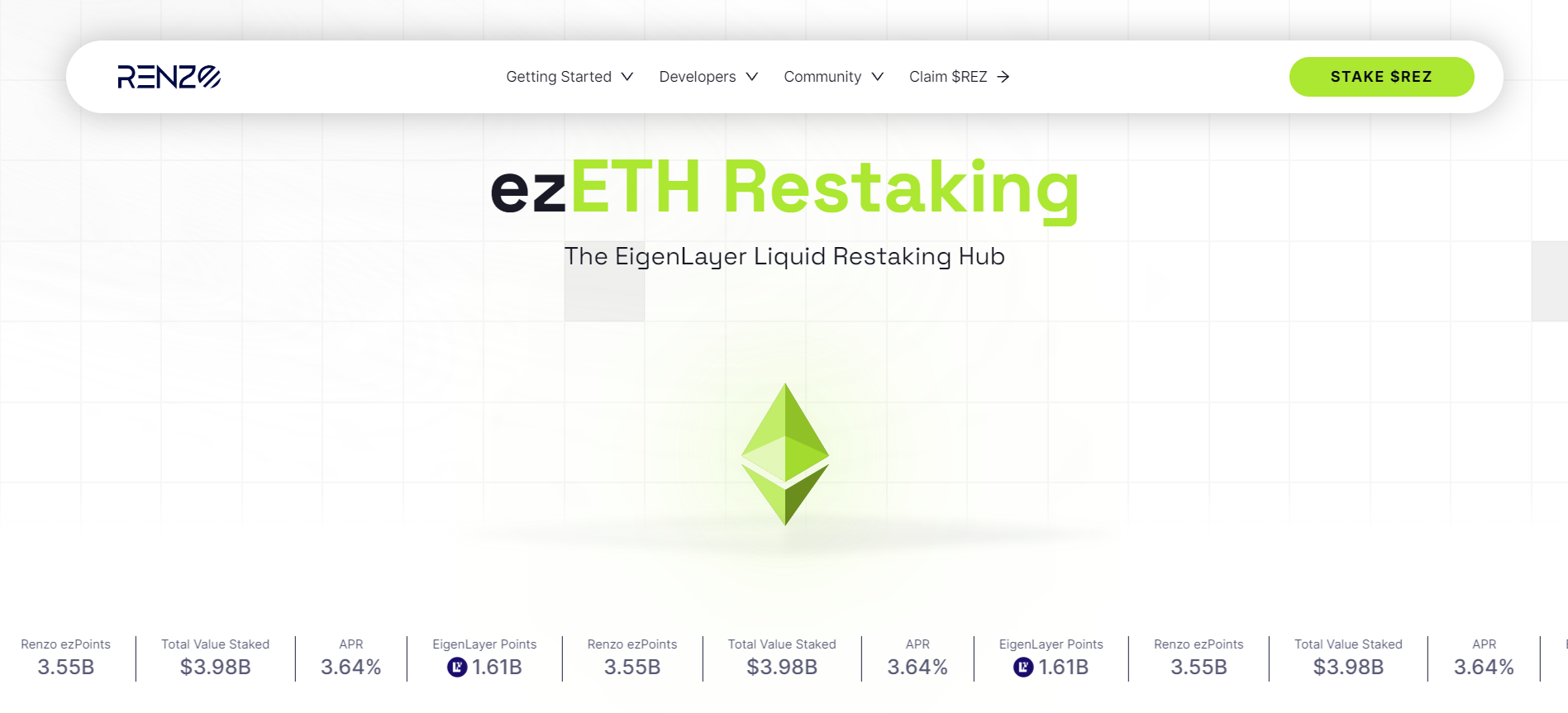
In June 2023, EigenLayer introduced the concept of restaking to the Ethereum DeFi community. ETH restaking builds upon the well-known concept of ETH liquid staking, by enabling the staking of ETH liquid staking derivative (LSD) tokens to secure other protocols or even chains through a shared security model. EigenLayer initially kicked off with a guarded launch capped at 3,200 tokens for each of the three selected ETH LSD tokens: Lido’s stETH, Rocketpool’s rETH and Coinbase’s cbETH.Since then, EigenLayer has reopened for deposits several more times, today holding a whopping $15.3 billion, or 4.9 million ETH tokens, in total value locked (TVL), placing EigenLayer only second in TVL ranking to Lido.
However, EigenLayer staking came with its own drawbacks too. Depositors were subjected to a seven day withdrawal period from EigenLayer to ensure the security of the protocol and the projects secured by it. As such, EigenLayer depositors once again faced the issue of locked liquidity, just as Ethereum stakers faced before the rise of ETH LSDs.Enter
ETH liquid restaking
A new sector emerged with the success of EigenLayer to tackle this issue, forming the ETH liquid restaking market which now holds almost $10 billion in TVL. As one of the early projects to launch in this sector, Renzo Protocol today holds more than $3.3 billion in TVL alone.
What Is Renzo?
Renzo emerged in early December 2023 to build on the innovation of EigenLayer, forming one of the early ETH liquid restaking projects. Renzo was designed to be a liquid restaking token (LRT) and strategy manager for EigenLayer to promote the widespread adoption of restaking and EigenLayer.
In essence, Renzo sought to be the primary on-ramp/off-ramp for Ethereum restakers, as well as balance risk and reward across the range of Actively Validated Services (AVSs) on EigenLayer to achieve the best restaking strategy for Renzo’s depositors.
How Does Renzo Work?
Users can deposit ETH, WETH, stETH or wBETH directly to Renzo to receive Renzo’s liquid restaking token, ezETH. Points are earned by simply holding ezETH, with 1 ezPoint being earned for every ezETH held per hour. Additional boosts are also granted for early participation and referrals.
EzETH is a yield-bearing token, which accrues rewards directly to the token, thereby reflecting it in its price. As EigenLayer achieves mainnet and more AVSs build on EigenLayer, ezETH holders can expect rewards to accrue in ETH, USDC and native tokens of the respective AVSs being secured by EigenLayer.
Although there is a seven day withdrawal period on Renzo as well, liquidity is provided for the ezETH token against WETH for users who wish to acquire liquidity quickly.
Since Renzo runs its own Beacon chain validator nodes, users who stake with Renzo do not need to wait for EigenLayer deposits to reopen. As such, this allowed Renzo to quickly gain popularity and TVL among the restaking crowd as it allowed them to bypass EigenLayer’s deposit caps.
As gas on Ethereum mainnet began to heat up with the bull market going into full swing, Renzo further expanded with the help of interoperability layer, Connext Network, to five other chains including the Binance Smart Chain, and popular L2 chains, Arbitrum, Linea, Base and Mode.
Additionally, Renzo has integrations with several DeFi applications and chains including Pendle, Zircuit, Gearbox, Morpho and many more. These integrations enable users to further leverage their restaking positions, earning them boosted ezPoints in the process or rewards from point programs on other projects.
The Renzo Token and Tokenomics
On April 24, Renzo announced the upcoming launch of their governance token, REZ, and an airdrop to reward loyal users of the protocol based on ezPoints accumulated during their points program. The airdrop initially sought to distribute 5% of the total token supply, or 500 million tokens to eligible users, which would be open for claiming on May 2. However, after backlash from users over the small distribution to users as well as the delayed claim over exchange listings, which were planned two days earlier on April 30.
Renzo later revised the token distribution to revise the allocation for the first airdrop to 7% as well as adjusting the total token supply allocated to airdrops from 10% to 12%. Additionally, the claim date for airdrop recipients was also adjusted to April 30, planned for one hour before the Binance listing. Users with more than 500K ezPoints also had 50% of their airdrop subject to a 3 month linear vest, with the other 50% unlocked on the token generation event (TGE).
The REZ token has a total supply of 10 billion tokens, with an initial circulating supply of 1.15 billion tokens or 11.5% of the supply. The initial circulating supply is largely made up by the airdrop allocation as well as tokens allocated for liquidity provision on launch.
The remaining tokens will be subject to a one year cliff, followed by a linear vesting schedule. Core contributors are subject to a two year linear vesting, while investor tokens are subject to a one year linear vesting following the cliff. Investors will also see an initial unlock of 10% after the 1 year cliff.
Bottom Line
Binance announced the launchpool for the REZ token on April 23, as the 53rd launchpool project. Users can now stake BNB or FDUSD in separate pools for six days to farm for REZ tokens, with the pools opening on April 24. After the launchpool ends on April 30, depositors will receive their respective token allocations from a pool of 250 million REZ tokens, or 2.5% of the total token supply. At the same time, the token will go live on the exchange for trading.


















